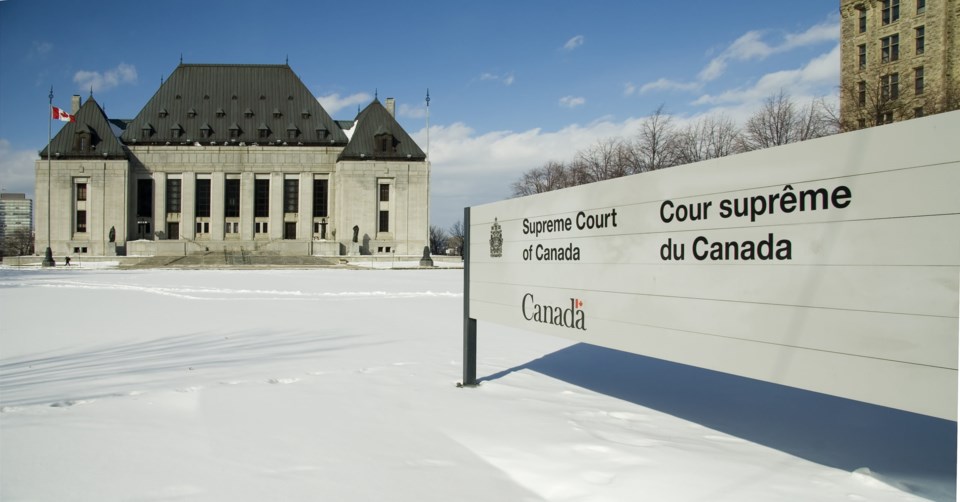As British Columbia waits to see how the Wet'suwet'en discussions resolve, it’s worth looking at the case so often referred to, the Supreme Court of Canada’s 1997 decision in Delgamuukw.
Delgamuukw was a case brought by hereditary chiefs of the Gitxsan and Wet'suwet'en First Nations claiming 58,000 square kilometers of land on behalf of 71 of their Houses.
The case was dismissed by the BC Supreme Court and again in the Court of Appeal. The SCC allowed the appeal, but due to pleadings and evidentiary issues, it reluctantly ordered a new trial. It also strongly encouraged resolution through negotiation.
The original trial had been a massive undertaking, with 374 court days spread out over four years. The dismissal by the BCSC in 1991 was acutely disappointing to all those who had worked so hard to demonstrate their claim to the land. The final SCC decision was some consolation in resolving the law – but it did not resolve the claims of the Gitxsan and Wet'suwet'en peoples.
Aboriginal title is sui generis, meaning it is unique and unlike other forms of land ownership in Canada.
In his seminal decision, Chief Justice Lamer described the law around rights and title. A First Nation can establish title by proving continuous and exclusive occupation of the land. Rights are broader but less specific, and may established be over larger portions of land which was used in some way by the nation, and may be shared by other nations.
Aboriginal title is sui generis, meaning it is unique and unlike other forms of land ownership in Canada. It is not like owning your home or your land in fee simple. Title is held by the community. Title land cannot be sold, although it can be surrendered back to the Crown. The land can be used in non-traditional ways (mining for example), but can’t be used in a way which destroys its value.
The court says that if a nation wants to use its land in a way that title doesn’t permit, then they must convert the lands into non-title, although I am skeptical this would ever play out. Once a First Nation has established title, I doubt that a government would try to pull it away from them.
Interestingly, and often missed, is the very clear description of how Aboriginal title may be infringed by the Crown. The infringement must be in furtherance of a legislative objective that is compelling and substantial:
“In my opinion, the development of agriculture, forestry, mining, and hydroelectric power, the general economic development of the interior of British Columbia, protection of the environment or endangered species, the building of infrastructure and the settlement of foreign populations to support those aims, are the kinds of objectives that are consistent with this purpose and, in principle, can justify the infringement of aboriginal title.”
It is very clear that, for example, a pipeline in the provincial interest can be built across title land. Consultation is required, but there is no veto.
“Let us face it, we are all here to stay.”
One issue the case does not resolve is the relationship between elected councils and hereditary chiefs. Although the case was brought by hereditary chiefs and their ability to claim title was established, the case does not stand for the proposition that the elected councils only have jurisdiction on the reserves themselves.
Degamuukw seemed revolutionary at the time. Now it seems like good, clear, settled law. It strikes a balance between competing interests and populations. And it ends with the Chief Justice’s famous line:
“Let us face it, we are all here to stay.”
Hon. Suzanne Anton QC is a former Minister of Justice and Attorney General of British Columbia and a former Vancouver City Councillor
SWIM ON:
- In January, Suzanne Anton noted the Supreme Court took B.C. at its word - and thus ruled against it.
- Dallas Smith: Protests and blockades superficially in support of the Wet'suwet'en hereditary chiefs obscure what should be an internal dispute about governance.
- Gwyn Morgan: Provincial and federal governments should ask First Nations who support the Coastal GasLink project to speak up.



